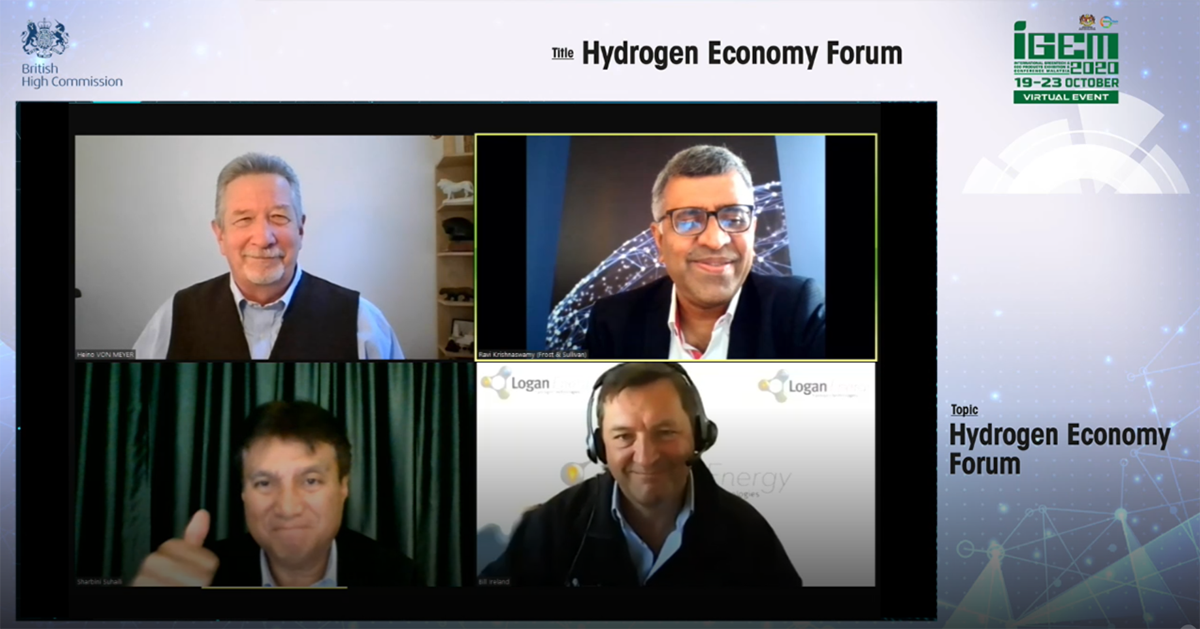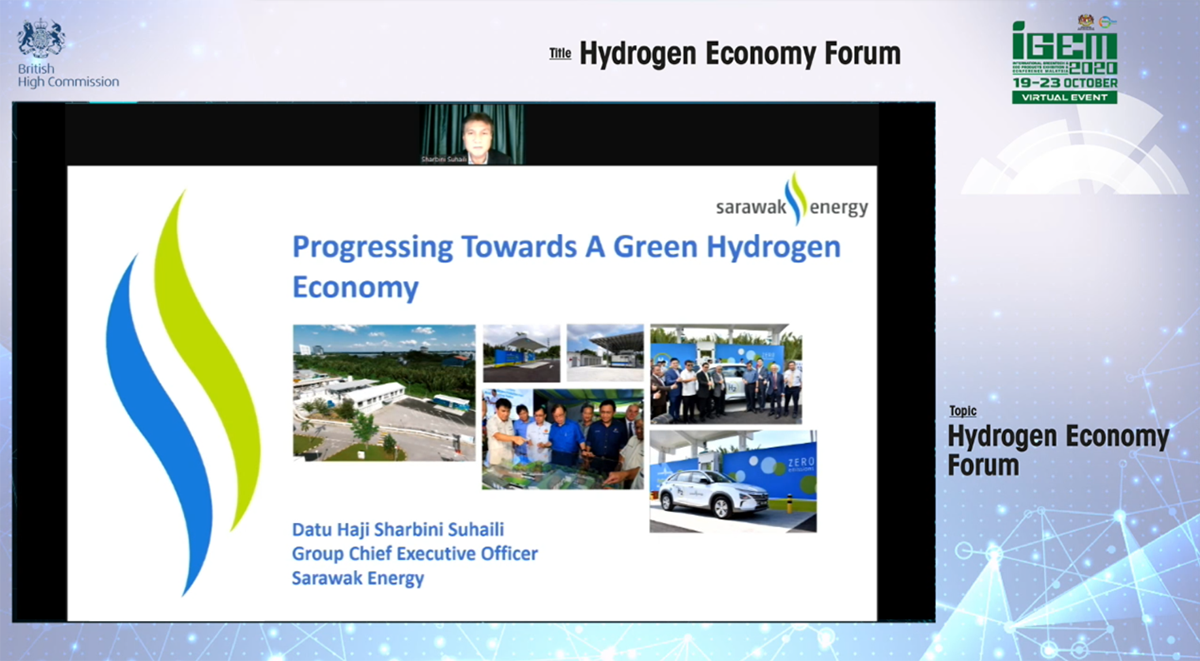

NEWS & UPDATES
Progressing Towards a Green Hydrogen Economy: Sharing Sarawak Energy’s Hydrogen Development at IGEM 2020
KUCHING
27 OCTOBER 2020
Sarawak Energy recently participated in the International Greentech & Eco Products Exhibition & Conference Malaysia 2020 (IGEM 2020).
Sarawak Energy’s Group Chief Executive Officer, Datu Haji Sharbini Suhaili was invited as a panelist to share the corporation’s hydrogen developments in the ‘Hydrogen Economy Forum’ held on 21 October.
Moderated by Mr. Ravi Krishnaswamy Senior Vice President-Energy, Sustainability, Industrial of Frost & Sullivan, other panelists included Bill Ireland, Chief Executive Officer of Logan Energy and Heino Von Meyer, Head of Global Relations and Networking, International PtX Hub Berlin.
“Sarawak is blessed with abundant renewable hydropower potential that can be harnessed to produce low carbon hydrogen and is well positioned to become a significant hydrogen player in the global hydrogen value chain, ” said Sharbini during his session.
Sarawak has two key competitive advantages as a potential hydrogen producer - its industrial electricity tariffs are highly competitive at both national and regional level and renewable hydropower dominates its generation mix. This essentially means that it can use renewable hydropower to produce green, carbon-neutral hydrogen.
Currently, hydrogen is primarily used in Sarawak as an essential process feedstock in various industries with most of the hydrogen produced on site by end users such as petrochemical and semiconductor players.
“The hydrogen economy is a new concept even at global level, and awareness education to the public and concerned stakeholders is important to address concerns and potential misperceptions,” he highlighted.
Sharbini pointed out that the implementation of the hydrogen agenda has its own set of challenges. This includes the current high cost of the hydrogen value chain; readiness of technologies to support and economies of scale for mass production. However, he believes that the challenges could be overcome to enable Sarawak to capitalise on the opportunities by being ahead of the curve.
“Hydrogen is already recognised globally as a key enabler in energy decarbonisation and ultimately, climate change mitigation. If all players work together, we can benefit collectively from technology improvements and economies of scale, driving down costs of the hydrogen value chain and increasing uptake in the coming years,” he continued.
“We thank the Government of Sarawak for their trust in allowing Sarawak Energy to play a pivotal role through research in the development or application of technologies that will alter the energy utilisation landscape and progress a green hydrogen economy for Sarawak and beyond,” he concluded.
In 2017, Sarawak’s Chief Minister announced that Sarawak Energy would be entrusted to lead a State-funded research project on hydrogen’s commercial and public application. This was based on the premise that hydrogen could become the primary fuel of choice for areas such as the transportation sector and energy storage as the technology matures and becomes more commercially attractive in the future.
Sarawak Energy now produces green hydrogen through electrolysis at its integrated hydrogen production plant and refuelling station in Kuching, built and commissioned in 2019 in partnership with Linde, the world's largest industrial gas company.
The integrated production plant is Southeast Asia’s first such facility. It is capable of fuelling up to five fuel cell buses and 10 fuel cell cars per day. The facility is contributing significantly to the body of knowledge in and evaluation of the hydrogen economy in a tropical environment.


Group photo of the panelists in the Hydrogen Economy Forum session. Session moderator, Mr. Ravi Krishnaswamy (Top Right) with panelists, Mr. Bill Ireland (Bottom Right), Mr. Heino Von Meyer, and Datu Haji Sharbini Suhaili (Bottom Left).


Sarawak Energy’s Group Chief Executive Officer, Datu Haji Sharbini Suhaili presenting the corporation’s hydrogen developments in IGEM 2020.